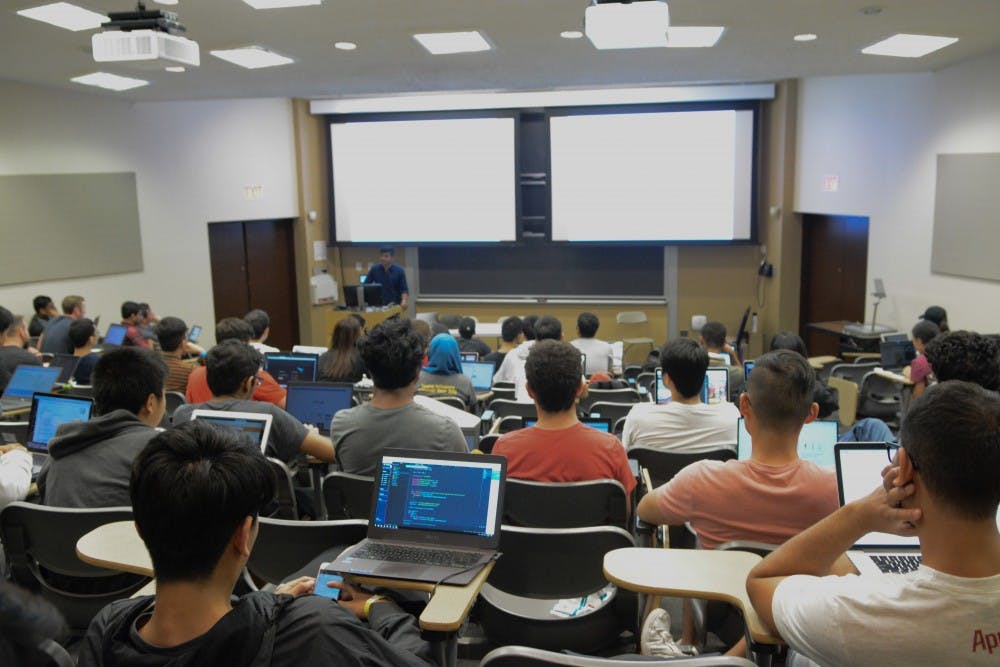
When touring colleges and scouring college advising websites, we are taught that the lower a school’s student-faculty ratio is, the smaller the classes are, and the more one-on-one time can be spent between students and professors. However, two semesters of classes at Penn have shown me that the student-faculty ratio is not a good representation of class size, and therefore should not be used to get a good sense of how big a class is at any school. Average class size percentages may be more useful, but even that data does not tell the whole truth.
Let’s take Penn, for example. Penn has a 6:1 student-faculty ratio. But anyone who has taken a class at Penn knows that it is not so easy to find a class with only six people in it. While it is true that, if you look at class size, 27% of Penn’s classes have 2-9 students in them, and 41% of classes have 10-19 students in them — meaning that the majority of Penn’s classes are fairly small — many first-year students are going to be taking introductory courses that tend to be much larger, with most smaller classes not available to them until later.
For example, Introduction to Microeconomics, a class recommended for Economics majors, has 230 students in it, and Introduction to Experimental Psychology, a class recommended for Psychology majors, has 400 students in it. However, based on the stats alone, first-year students might expect either, if not both, of these classes to have fewer than ten people in it. It does not help matters that many prospective students are likely used to high school classes that were small or comparable in size regardless of the subject taught. A student may not be prepared to see a lecture hall filled with at least 50 other students for Introduction to Calculus, a subject they were able to participate more frequently in while in high school, in a class of around 15 people.
On the other hand, there are certain departments that tend to have small class sizes, such as the language department, English department, and writing department, which houses the mandatory writing seminar. These departments are certainly counted in the statistics for average class size, and contribute to the illusion that the University has a large number of small classes across all departments.
Penn isn’t alone in this, though. MIT has a 3:1 student-faculty ratio, but, just like Penn, many of the smaller classes are only for upperclassmen, while first-year students are likely going to be taking large lecture classes. An estimated 86% of classes at MIT have around 21 people. While 21 is still fairly small, it’s not three. At this point, the student-faculty ratio is providing useless information.
Rather, there should be subject- and major-specific statistics available for students, so that they don’t find themselves looking at class-size statistics that are based off a subject or major they are not interested in.
But in the meantime, instead of looking at just the student-faculty ratio or class size, it is important that people ask students currently at the school in which they are interested about the size of the classes, especially about classes in the department they might be interested in studying themselves. If a student is interested in math and learns best in a small class setting, that student should look at the classes offered in the math department to make sure they would not just be taking big lecture classes every semester.
So, if you really want to get an accurate assessment of how big the classes are at any school, ask someone who is taking classes you are considering taking, or studying something that you may be interested in. The student-faculty ratio for any school is misleading, and class size statistics oftentimes only give you half the story.

ILYSE REISMAN is a College sophomore from Millburn, N.J. studying English and Music. Her email address is ireisman@sas.upenn.edu.
The Daily Pennsylvanian is an independent, student-run newspaper. Please consider making a donation to support the coverage that shapes the University. Your generosity ensures a future of strong journalism at Penn.
Donate







